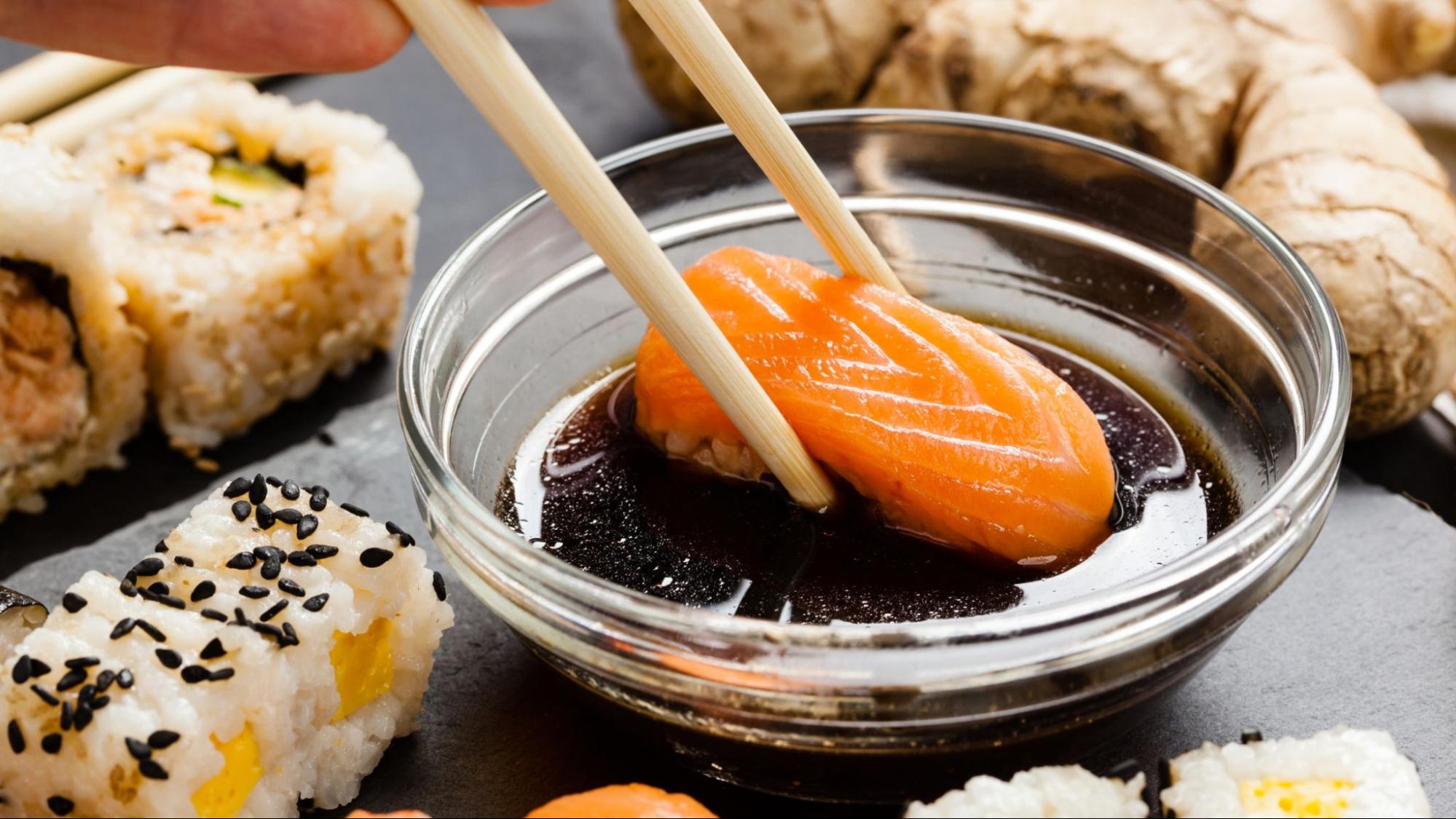There’s a certain magic to preparing sushi rice that just can’t be ignored. A great sushi roll starts with the perfect ricefluffy, sticky, and seasoned to perfection. This **easy sushi rice recipe** will guide you through the process with ease, ensuring the foundation of your homemade sushi is nothing short of spectacular. Whether you’re a beginner or a seasoned sushi enthusiast, this guide is tailor-made for you.

The Fundamentals of Sushi Rice
Sushi rice, known in Japanese as ‘shari’ or ‘sumeshi,’ is much more than your average bowl of rice. Unlike plain steamed rice, sushi rice is created with a careful balance of rice vinegar, sugar, salt, and sometimes sake. These ingredients blend to infuse each grain with a tangy flavor that perfectly complements the delicate taste of raw fish and other sushi fillings.
An **easy sushi rice recipe** doesnt have to compromise on authenticity. Traditional sushi rice preparation involves cooling the rice to absorb the vinegar mixture slowly, which requires some patience. However, we’ll simplify some steps to make this recipe accessible for all skill levels without sacrificing quality.
Choosing the Right Type of Rice
To achieve the sticky yet firm texture that defines great sushi rice, you’ll need to use Japanese short-grain rice. This type of rice has a higher starch content, which is essential for that signature stickiness. Brands like Nishiki or Kokuho Rose are excellent options for crafting the perfect sushi rice.
Investing in a high-quality rice cooker can eliminate much of the guesswork, ensuring your rice is cooked to perfection every time. A rice cooker like the Zojirushi Rice Cooker is a great addition to any kitchen.

Ingredients and Equipment
Before diving into the steps of this **easy sushi rice recipe**, gather the following ingredients and kitchen tools:
Ingredients:
- 2 cups Japanese short-grain rice
- 2 cups water, plus extra for rinsing the rice
- 1/2 cup rice vinegar
- 1/4 cup sugar
- 1 tablespoon salt
Equipment:
- A rice cooker or heavy-bottomed pot
- A sushi knife
- A cutting board
- A strainer
- A sushi making kit

Step-by-Step Instructions
This **easy sushi rice recipe** is broken down into manageable steps, so even novice chefs can achieve outstanding results.
Step 1: Rinse the Rice
Begin by thoroughly rinsing 2 cups of Japanese short-grain rice in cold water. Place the rice in a large bowl, fill it with water, and use your hands to gently swish the rice around. Drain the cloudy water and repeat this process 3-4 times until the water runs clear. This step removes excess starch, which helps prevent the rice from becoming too sticky or gummy.
Pro Tip: Use a fine mesh strainer to make the rinsing process easier.
Step 2: Cook the Rice
If you’re using a rice cooker, follow the manufacturer’s instructions for cooking 2 cups of rice. Add 2 cups of water and let the cooker do the work. If you dont own a rice cooker, a heavy-bottomed pot will work just as well. Combine the rinsed rice with 2 cups of water in the pot, cover, and bring to a boil. Once boiling, reduce the heat to low and simmer for 18-20 minutes, or until all the water has been absorbed. Remove from heat and let it sit, covered, for another 10 minutes to steam.
Curious about other sushi variations to try once you master the rice? Check out our Hawaiian Roll recipe for a tropical twist on sushi or the spicy Volcano Roll.
Step 3: Prepare the Vinegar Mixture
In a small saucepan, combine 1/2 cup rice vinegar, 1/4 cup sugar, and 1 tablespoon salt. Heat the mixture over medium heat, stirring constantly until the sugar and salt dissolve completely. Remove from the heat and let it cool to room temperature. This mixture is the secret to that quintessential sushi rice flavor.
Step 4: Season the Rice
Transfer the cooked rice to a large, non-metallic bowl. Traditional Japanese chefs use a wooden tub called ‘hangiri,’ but a glass or plastic bowl works as well. While the rice is still hot, gently fold in the vinegar mixture using a rice paddle or wooden spoon. Avoid mashing or stirring too vigorously, as this can break the rice grains and affect the texture. The goal is to evenly coat each grain with the vinegar mixture.
Step 5: Cool the Rice
Allow the seasoned rice to cool to room temperature. Spread it out in a shallow layer for faster cooling, and cover it with a damp cloth to prevent drying out. This cooling process lets the flavors meld and the rice to achieve the perfect texture for sushi. Once cooled, your sushi rice is ready to use!

Tips for Perfect Sushi Rice
If youve followed this **easy sushi rice recipe** up to this point, youre well on your way to creating delectable sushi at home. Here are a few additional tips to ensure your sushi rice is flawless every time:
- Use a Fan: Fanning the rice as you fold in the vinegar mixture helps to cool it quickly and gives it a glossy finish. This traditional technique is worth the extra effort.
- Ratio is Key: The rice-to-water ratio is crucial for perfect sushi rice. Always measure accurately to avoid soggy or undercooked rice.
- Consistency Matters: When seasoning the rice, ensure the vinegar mixture is uniformly distributed for consistent flavor throughout.
- Keep It Covered: Use a damp cloth to cover the rice while it cools to prevent drying out, which can affect texture and taste.
Making Sushi Rolls at Home
With your sushi rice ready, its time to roll! Whether youre a fan of classic rolls like the California Roll or crave something more adventurous like the Lobster Roll, having perfectly prepared sushi rice is essential. Set up a clean workspace and gather your sushi-making kit, including bamboo mats, nori (seaweed sheets), a sharp sushi knife, and your chosen fillings.
Heres a quick guide to assembling a basic sushi roll:
Step 1: Prepare Your Ingredients
Slice your fish, vegetables, and any other fillings thinly. It’s easier to handle and roll thin strips, and they provide a balanced bite in every piece of sushi.
Step 2: Lay Out the Nori
Place a sheet of nori, shiny side down, on your bamboo rolling mat. Wet your hands to prevent the rice from sticking, then gently spread a layer of sushi rice over the nori, leaving a small border at the top edge.
Step 3: Add Fillings
Add your chosen fillings horizontally across the center of the rice. Be mindful not to overstuff the roll, as this can make rolling difficult and may cause the roll to fall apart.
Step 4: Roll the Sushi
Using the bamboo mat, carefully lift the edge of the nori closest to you and roll it forward, encasing the fillings. Apply gentle, even pressure as you roll to ensure a tight, even roll. Once you reach the edge, moisten the top border of the nori with water to seal the roll.
Step 5: Slice and Serve
Use a sharp sushi knife to slice the roll into bite-sized pieces. Clean the knife with a damp cloth between each slice to maintain clean cuts. Arrange the sushi pieces on a platter and serve with soy sauce, pickled ginger, and wasabi for an authentic sushi dining experience.
Want to take your sushi skills to the next level? Learn how to create Deep Fried Sushi Rolls for an irresistibly crunchy twist on classic sushi.
Cleaning and Maintenance of Cookware
After preparing your delicious sushi, cleaning up is an essential but often overlooked part of the process. Proper care will ensure your cooking tools last longer and remain in excellent condition. Here are some tips for maintaining your sushi-making equipment:
Cleaning the Rice Cooker
After each use, be sure to clean your rice cooker’s inner pot and lid thoroughly. Avoid using abrasive sponges or harsh chemicals that could damage the nonstick coating. Warm, soapy water and a soft cloth or sponge are the best way to clean these delicate surfaces. For a comprehensive guide, check out this tutorial on maintaining cookware.
Maintaining Your Sushi Knife
Your sushi knife should be hand-washed with warm water and mild soap immediately after use. Dry it thoroughly with a soft cloth to prevent rusting and maintain the blade’s sharpness. Regularly honing your knife will keep it in prime condition for precision cutting.
Taking Care of Your Cutting Board
Wooden cutting boards require special care to avoid warping and cracking. After cleaning, ensure your board is completely dry before applying a food-safe mineral oil to condition the wood. This practice prevents the board from absorbing too much moisture and maintains its durability. Learn more about cutting board care here.
Investing in a high-quality cookware cleaner can make these tasks easier, ensuring your kitchen tools remain as good as new.
Conclusion
Making sushi at home doesnt have to be daunting. With this **easy sushi rice recipe**, youll master the foundation of any great sushi roll and open up a world of culinary possibilities. From choosing the right rice to perfect seasoning and careful cooling, every step contributes to the final, delectable product. Pair your sushi with traditional accompaniments like miso soup or green tea for a truly authentic meal experience.
Now that youre equipped with the knowledge of creating perfect sushi rice, why not expand your sushi repertoire? Dive into the deliciously complex world of Lobster Roll Sushi or try your hand at the ever-popular California Roll. Happy rolling!
As an Amazon Associate, I earn from qualifying purchases.
——————————————————————————————————–
Disclosure: This post contains affiliate links. As an Amazon Associate I earn from qualifying purchases, but there will be no extra charges to you. Thank you for your support!




